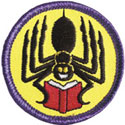 LITERATURE GENRESFunk & Wagnalls defines genre as "a genus, sort, or style; especially a category of art of literature characterized by a certain form, style, subject matter or atmosphere." Children's literature provides an array of genres from which children may choose to read. Unfortunately, some children have not been introduced to a variety of genres. In my opinion, some children who do not like to read have yet to find a genre that is entertaining to them, but instead, they have had books pre-selected for them to read. I believe that children who are exposed to a variety of genres will eventually find one that suits them, entertains them, excites them, and they will go looking for more of the same. Sometimes, this may happen through finding an author they like, sometimes it may be a series of books by an author, or sometimes it may be just the genre itself. My goal is to help children learn what they want to read, and in turn, help them become readers for life. The library incentive program for fourth graders this year is based upon learning and reading about different genres. The students keep a record of their progress in a journal. They earn a sticker for each book they read. Each sticker represents a genre. After reading two books from a particular genre, the student receives a patch/badge. After 10 books have been read from five different genres, the student earns a cap with the badges sewn on it. The cap may be worn to school and in the school building as long as no alteration has been made to it. Due to the reluctant nature towards reading some of our children with learning differences exhibit, I encourage parents to read to their children. Another option is to select books on tape or CD. If students wish to listen to a book, I encourage them to follow along in the book. Either of these methods are acceptible and badges are awarded for the student's efforts. The following is a brief description of each genre, the badge earned, and some notable authors in the genre. The descriptions of the genres are from Literature and the Child, Lee Galda and Bernice E. Cullinan, Wadsworth/Thomson Learning: Belmont, CA. 2002, an excellent resource from the experts in children's literature. Picture Books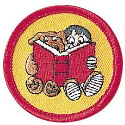 Although most children are introduced to picture books before they can read, picture books are for all ages. The stories are often "read" by a combination of text and interpreting the illustrations. Picture books are usually 32 pages in length. A drawing or illustration generally takes up the majority of the page. Sometimes there is a lot of white space on the page and very few words. Sometimes there are no words, just the illustrations. Notable authors are: Marcia Brown, Maurice Sendak, Chris Van Allsburg, David Wisniewski, and Paul Zelinsky. Excellence in illustration may be awarded a Caldecott Award. The award goes to the illustrator, not the author, unless they are the same person. Poetry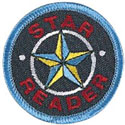 Poetry is written in a condensed language or with fewer words. Imagery or what you can visualize is the key to successful poetry. There is often a rhythmic feeling to hearing the words read aloud. Imagination and perception are expressed in poetry. Notable authors are: Shel Silverstein, David T. Greenburg, Bruce Lansky, Dr. Seuss, Jack Prelutsky and Tomie dePaola. Realistic Fiction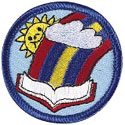 This genre includes fiction set in modern times with events that occur in the real world. Authors create characters, plots, and settings that could have actually existed. Realistic fiction addresses a wide range of human conditions and emotion such as hunger, death, divorce, and homelessness as well as such traditional themes as growing up and making friends. Several authors develop their characters by creating a series of books about them. Notable authors are: Katherine Patterson, Cynthia Rylant, Sharon Creech, Jean Craighead George, Avi, Beverly Cleary, Richard Peck, and many more too numerous to mention. Biography A biography tells about a person's life. The subject of biographies are usually people who were famous or led exemplary lives, such as national leaders, artists, sports figures, writers or explorers. A collective biography is a book that contains biographies of several people. An autobiography is the life story about a person in his/her own words. Notable authors are: Russell Freeman, Judith St. George, David Adler, Jean Fritz, Patricia McKissack. Historical Fiction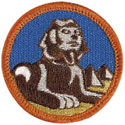 Historical fiction tells the story of history. It consists of imaginative stories grounded in the facts of the past. It is not biography which focuses on the life of an individual, but instead, it has a broader scope. It not only presents facts or recreates a time and a place, but also weaves the facts into a fictional story. Historical fiction is realistic fiction. It differs in that events are set in the past rather than the present. Notable authors are: Louisa May Alcott (Little Women), Irene Hunt, Christopher Paul Curtis, Jane Yolen. Notable series are: The Royal Diaries, Dear America, and American Adventures Fantasy Fantasy is imaginative literature distinguished by character, place, and events that could not happen in the real world. Animals can talk, inanimate objects have feelings, time follows the author's rules, and humans accomplish superhuman feats. Notable authors and book: Folklore Folklore is composed of stories that were passed down through generations by word of mouth before they were written down. They have no known author. Folklore reflects the values of the culture in which it grew. Types of folklore include nursery rhymes from Mother Goose, folktales and fairy takes, fables, mythology, legends, epics and hero tales. Notable interpretations are by: Paul Zelinsky, David Wisniewski, Verna Aardema, Lawrence Yep, Brothers Grimm, and Charles Perrault. Science Fiction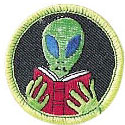 Science fiction explores scientific possibilities, asking and answering the question, "If this, then what?" It suspends scientific explanation and natural laws. Often the events take place in other worlds or different realities.
Notable authors and book: Non-Fiction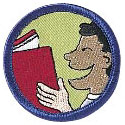 Non-fiction books contain facts about the real world. They are informational books that explain a subject or a concept. Sub-classes     There are several books that may be categorized more specifically into a sub-genre. Students may earn badges for these sub-genres either by reading non-fiction or fiction titles. From left to right: Animals, Dragons or Dinosaurs, Ghosts, Mystery, Sports Special categories - Award Winners and Series or Chapter Books.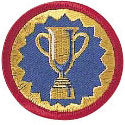 For reading books that have won a Newbery Award, Coretta Scott King Award, or other notable literature award, students may earn the award winner badge.  In addition, students often are introduced to "chapter" books after picture books. A special badge is available to students who read a chapter book from any genre or a book that is from a series. |